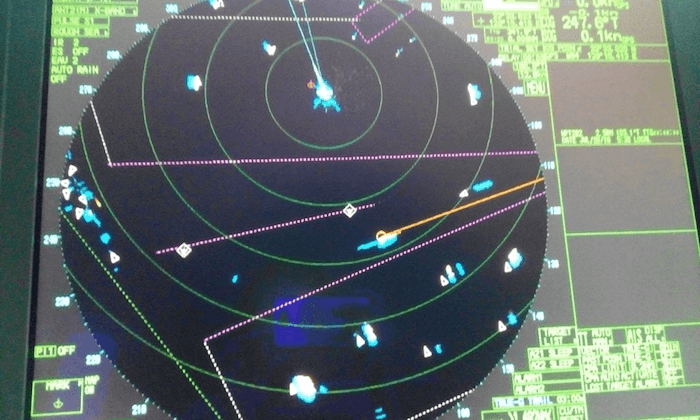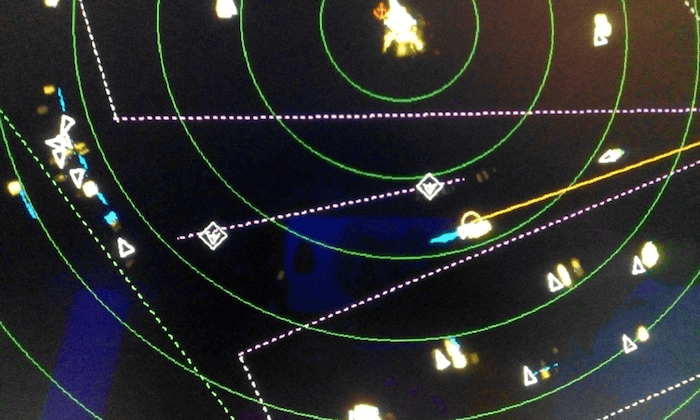

The world of AIS (or Automatic Identification System) can often be a confusing one to delve into, with many questions arising, such as “what is AIS?” “why do I need it?” and “what type of AIS does my ship need or have?”
An automatic Identification System (AIS) is an automated tracking system that displays other vessels in the vicinity. The broadcast transponder system operates in the VHF mobile maritime band.
Your ship also shows on the screens of other vessels in the vicinity, provided your vessel is fitted with AIS. If AIS is not fitted or not switched on, there is no exchange of information on ships via AIS.
The AIS onboard must be switched on at all times unless the Master deems that it must be turned off for security reasons or anything else. The working mode of AIS is continuous and autonomous.
It is fitted on ships for the identification of ships and navigational marks. However, it is only an aid to navigation and should not be used for collision avoidance. Vessel Traffic Services (VTS) ashore use AIS to identify, locate and monitor vessels. The Panama Canal uses the AIS to provide information about rain along the canal and wind in the locks.


The IMO Convention for the Safety Of Life At Sea (SOLAS) Regulation V/19.2.4 requires all vessels of 300 GT and above engaged on international voyages and all passenger ships, irrespective of size, to carry AIS onboard.
AIS operates principally on two dedicated frequencies or VHF channels:
It uses Self Organizing Time Division Multiple Access (STDMA) technology to meet the high broadcast rate. This frequency limits the line of sight, which is about 40 miles.
How does AIS work exactly? How do we obtain all this data?
Originally, AIS was used terrestrially, meaning the signal was sent from the boat to land and had a range of roughly 20 miles (also considering the earth’s curvature). As ships began sailing further away from land, they started sending the signal to low orbit satellites, relaying information back to land. This meant ships could sail as far as they liked, and we’d always have peace of mind knowing exactly where they were and how they were doing.
The AIS system consists of one VHF transmitter, two VHF TDMA receivers, one VHF DSC receiver, and a standard marine electronic communications link to shipboard display and sensor systems. Position and timing information is normally derived from an integral or external GPS receiver. Other information broadcast by the AIS is electronically obtained from shipboard equipment through standard marine data connections.
Although only one channel is necessary, each station transmits and receives over two radio channels to avoid interference and communication loss from ships. A position report from one AIS station fits into one of 2250 time slots established every 60 seconds. AIS stations continuously synchronize themselves to avoid overlap of slot transmissions.
It’s pretty easy to install as well, as AIS is generally integrated with ship bridge systems or multifunctional displays, but installing a standalone system is as straightforward as plugging in a couple of cables and switching on the plug.


1. Static Information (Every 6 minutes and on request):
2. Dynamic Information (Depends on speed and course alteration)
3. Voyage Related Information (Every 6 minutes, when data is amended or on request)
4. Short safety-related messages
In coastal waters, shoreside authorities may establish automated AIS stations to monitor the movement of vessels through the area.
Coast stations can also use the AIS channels for shore to ship transmissions and to send information on tides, NTMs and located weather conditions.
Coastal stations may use the AIS to monitor the movement of hazardous cargoes and control commercial fishing operations in their waters. AIS may also be used for SAR operations enabling SAR authorities to use AIS information to assess the availability of other vessels in the vicinity of the incident.
AIS contributes significantly to the safety of navigation. All the information transmitted and received enhances the effectiveness of navigation and can greatly improve situational awareness and the decision-making process.
As an assistant to the OOW, the tracking and monitoring targets by the AIS and determining information on the CPA and TCPA add great value to the safety of navigation overall.
However, the user should not rely solely on the AIS information for collision avoidance. AIS is only an additional source of information for the OOW and only supports the process of navigating the vessel. AIS can never replace human expertise on bridges!
As with all navigational and/or electronic equipment, the AIS has limitations:
To sum it up, the AIS only improves the safety of navigation by assisting the OOW/VTS or whatever entity. It’s pretty easy to install as well, as AIS is generally integrated with ship bridge systems or multifunctional displays, but installing a standalone system is as straightforward as plugging in a couple of cables and switching on the plug.
There’s a lot more to AIS than meets the eye, we delve more into depth with the accompanying handbook both for beginners and those more well-versed in the world of AIS.
Download the Definitive Handbook on AIS by Big Ocean Data below for information:
Download the Guide to AIS here
AIS works by taking the vessel’s location and movements through its GPS or the internal sensors built into the AIS unit. It is fitted on ships for the identification of ships and navigational marks. However, it is only an aid to navigation and should not be used for collision avoidance.
There are two classes of AIS, A and B. The former is Mandatory for all vessels 300 GT and above engaged on international voyages and all passenger ships. The latter provides limited functionality and is intended for non-SOLAS vessels. It is mainly used for pleasure crafts.
In simple words, an automatic identification system transmits a vessel’s position so that the other ones in the vicinity are aware of its position. International Organizations like IMO mandate that big commercial ships use an AIS for security reasons and to avoid collisions with other ships.
AIS Data is divided into three categories: static data, which consists of information about the ship’s characteristics. The second is dynamic data which is ever-changing due to the constant movement of ships, and the last is the current voyage-related data.
The AIS must be switched on at all times unless the Master decides that it should be turned off for security purposes. The AIS constantly interprets and updates data, making it an essential tool on a ship.
You may also like to read.
Disclaimer: The authors’ views expressed in this article do not necessarily reflect the views of The Marine Learners. Data and charts, if used, in the article have been sourced from available information and have not been authenticated by any statutory authority. The author and The Marine Learners do not claim it to be accurate nor accept any responsibility for the same. The views constitute only the opinions and do not constitute any guidelines or recommendation on any course of action to be followed by the reader.
The article or images cannot be reproduced, copied, shared or used in any form without the permission of the author and The Marine Learners.










We believe that knowledge is power, and we’re committed to empowering our readers with the information and resources they need to succeed in the merchant navy industry.
Whether you’re looking for advice on career planning, news and analysis, or just want to connect with other aspiring merchant navy applicants, The Marine Learners is the place to be.